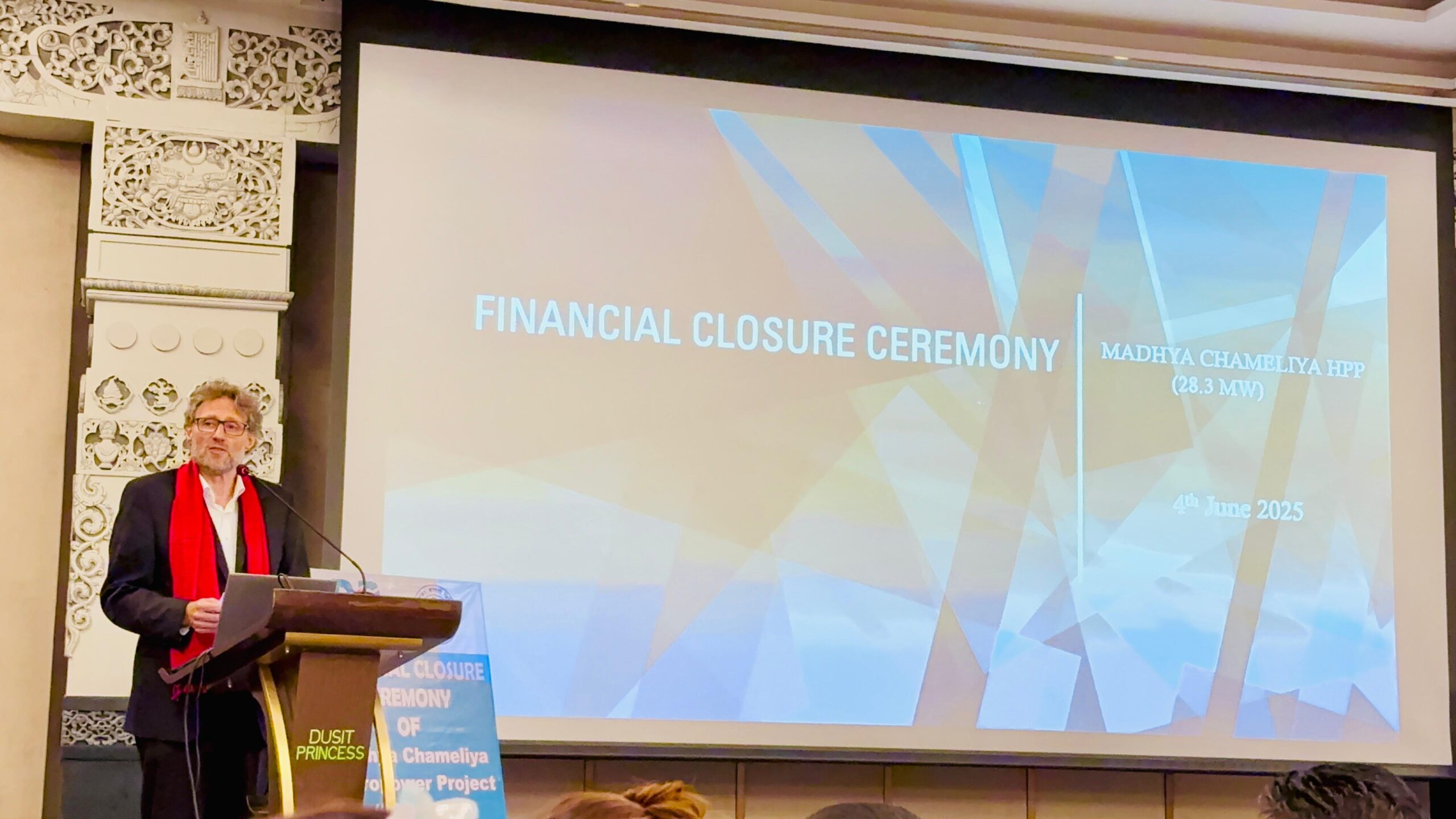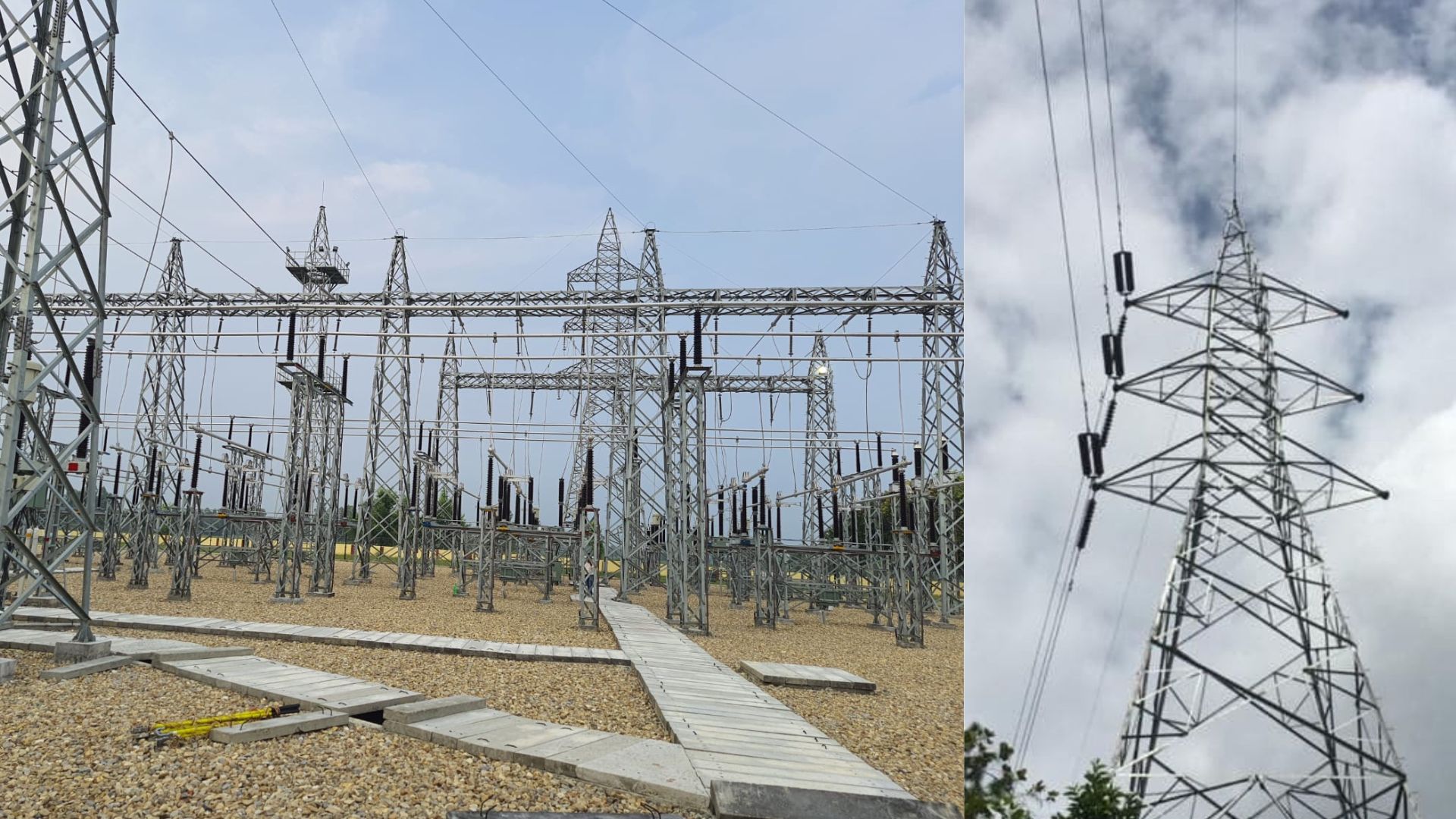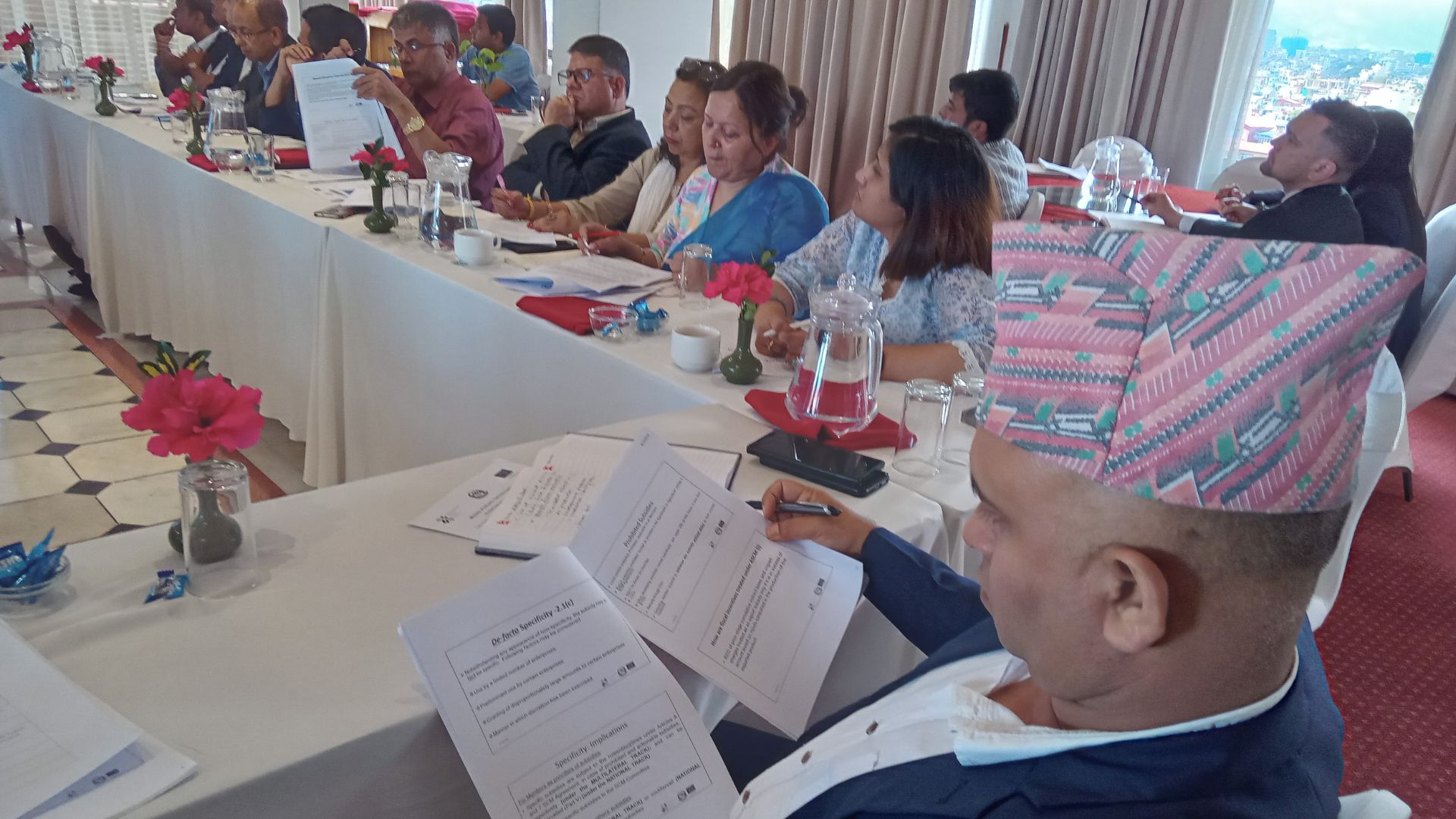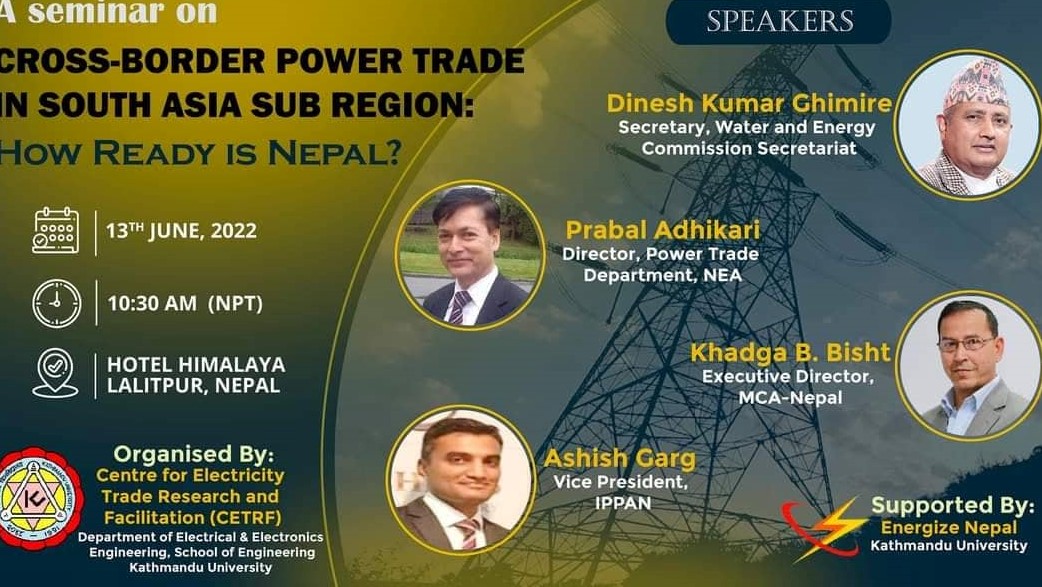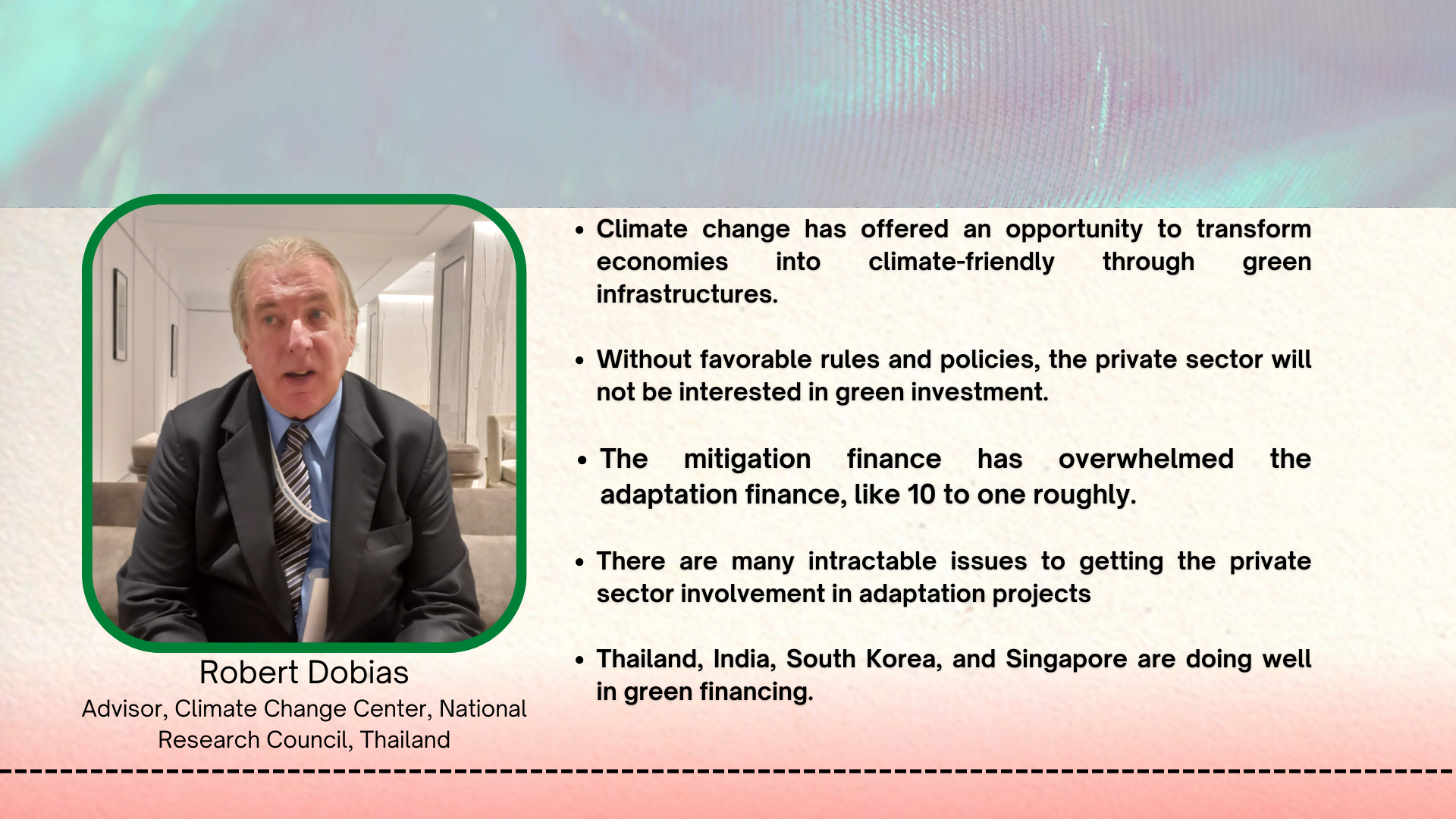
Robert Dobias is an advisor of the Climate Change Center, National Research Council of Thailand. Dobias is also associated with Asia-Pacific Network for Global Change Research. He has been involved in various climate change policy initiatives and watching this issue closely, especially South East Asia Region. Talking to Bhim Gautam, editor of nepalinfrastructure.com, an online news portal, he shared his views on various alternatives to arrange funds for green financing.
You have been closely watching the climate change issue for several years. How can we take this problem as an opportunity to promote green infrastructure investment?
Many countries in the world have their own commitment to mitigating climate change impact. As per the international commitment, they need to decarbonize their economies and sincerely work towards climate change adaptation measures. In response to that, many countries have accorded high priority to promoting green infrastructure investment. Climate change has offered an opportunity to transform economies to be climate-friendly through green infrastructure development.
How Asia Pacific region, including Nepal, is prepared to take up this great responsibility?
It’s still in the very early days. Primarily it is the responsibility of the government or public sector. So, governments certainly can do some things. The private sector is showing less interest in it. If the private sector doesn’t get interested in it, it is difficult to fulfill the commitments of the respective countries. It also does happen in the case of Nepal as well. If the private sector doesn’t get interested, it’s going to be very difficult to move forward as per desired plan.
There must be cooperation and collaboration between the government and the private sector in the form of a Public-Private Partnership (PPP), in which government facilitates private investment through favorable laws and policies so as to minimize risks in investment
So, the government probably can do a little bit in terms of finance, but more importantly, they can ensure that there’s the right policy in place. The government can also review the policies, and make codes, formulate regulations, and so on. If such policies and rules are not favorable to private sector investment, no private investor will show interest in green infrastructure. Hence, nations should check whether their policies and laws are favorable for green investment or not. After such assessments, the government should be ready to make the necessary amendment to the policies and laws to make them green investment friendly. The government should take lead in raising awareness about the significance of green investment and its benefit to the nation from an environmental and economic perspective.
We have many examples where green infrastructure initiatives can actually generate tremendous benefits in the forms of clean water supply, waste management, and others. There must be cooperation and collaboration between the government and the private sector in the form of a Public-Private Partnership (PPP), in which government facilitates private investment through favorable laws and policies so as to minimize risks in investment.
As a country most affected by climate change how can Nepal get benefit from global climate funding at a time when the private sector is not interested in green investment?
There are particularly in the lead-up to Cop-26, there has been increasing attention paid to climate finance. And, not surprisingly, the majority of that still is on the mitigation side. Nepal is really much concerned about climate change on the adaptation side and the impacts.
I think Nepal and others can expect that there will be more international funds available in the future for adaptation works. We cannot build hydropower projects without financing in environmental aspects as environmental financing comes along with the projects
The mitigation finance has overwhelmed the adaptation finance, like 10 to one roughly. Hence, mitigation projects and decarbonization projects are a lot easier to do than those regarding adaptation. And so, it’s much easier for the government and for the private sector to come forward and do projects like that. And because it is easier, the costs and the benefits are clear cut, it’s easier to find the finance for that. On adaptation, it’s more like the old integrated rural development efforts, that was difficult because trying to define the benefits and the costs is much more difficult, much more amorphous than putting up a dam or sea wall or whatever. So that’s the real challenge. However, more attention is being given to this now. I think Nepal and others can expect that there will be more international funds available in the future for adaptation works. We cannot build hydropower projects without financing in environmental aspects as environmental financing comes along with the projects.
Regarding climate change mitigation and adaptation, have you seen any of the best practices of the private sector’s involvement in the Asia Pacific?
In the Asia region, the private sector is dominating force in clean energy production as they know they can make money out of such projects now. Clean energy keeps getting cheaper to produce and eventually being available at a cheaper price to consumers. And now it’s competitive with traditional forms of energy. And so, the private sector is in there fully having no issues. But again, the challenge is getting the private sector more involved in the education side. I am sure there are examples, but I can’t think of any right now. However, off-grid climate-resilient projects are more expensive.
Do you mean small hydro, micro-hydro, solar, and all like that?
Yes, you are right. Solar photovoltaic, or whatever it may be, provides support to put that infrastructure into areas that are off-grid. It is too expensive to hook into the grid. That is certainly one example. And I think that’s a good example, because, it’s something the private sector knows how to do easily. They don’t have to learn a new skill to be able to do that type of thing. It meets a real need in rural areas. Nepal knows very well, how the reliable generation of electricity, can completely change the lives of people in their community. So that’s an easy one. That’s an example. But there are many intractable issues to getting the private sector involvement in adaptation projects. So, we need to work on exploring solutions.
Some experts say green infrastructure financing is costlier than normal financing. So, how can we attract the private sector to invest in green infrastructure projects?
We need to make sure that policies and regulatory foundations are in place to support green infrastructure. If you don’t do that, if you don’t start at the policy level, the private sector will not jump into investing in green infrastructure. But a good economist will show you why it’s economically beneficial for you to put these environmental projects together. If we convince the lending agencies that green infrastructures are economically viable, there will not be a scarcity of funding.
Is there any fresh assessment regarding the required amount to combat climate change? How much gap exists between requirement and available funding?
Good question. I am now not in a position to tell you the exact amount required for dealing with climate change. In Thailand, we just had a meeting on green finance, where we talked about the financing gap, and so on. These numbers will not come to me right now, I would have to go back and look, but it is huge. If I give you a rough estimate, it probably will be very wrong. So, I would prefer not to do it. But the gap is huge. But the lesson from that seminar was that there are a lot of ways to pluck the gap. There are a lot of alternative ways.
Thailand has done pretty well in green financing through green bonds. I think the trend is upward in terms of Thai’s ability to use green bonds to start financing climate change activities. Similarly, other countries of Asia including Nepal’s close neighbor India is doing well in climate bond
There are special green financing facilities all around. So, in this case, the Asian Development Bank talked about a green facility for the Association of South East Asian Nations (ASEAN) region, where USD 2 billion will be poured into green activities. We also can use climate bond initiatives such as green bonds. Thailand has done pretty well in green financing through green bonds. I think the trend is upward in terms of Thai’s ability to use green bonds to start financing climate change activities. Similarly, other countries of Asia including Nepal’s close neighbor India is doing well in climate bond. Similarly, Singapore, Japan, and South Korea are also the countries that Nepal can learn from regarding green financing.


